- FTTH ã 10G XGSPON >SFP Transceivers >10/100/1000M Copper SFP w/ Link Indicator

10/100/1000M Copper SFP w/ Link Indicator
ASCENTãS SFP-AG-CO-04 10/100/1000 BASE-T Copper Small Form Pluggable (SFP) transceivers are based on the SFP Multi Source Agreement (MSA) . They are compatible with the Gigabit Ethernet standards as specified in IEEE Std 802.3. The 10/100/1000 BASE-T physical layer IC (PHY) can be accessed via I2C, allowing access to all PHY settings and features.
ã Up to 1.25 Gb/s bi-directional data links
ã Hot-pluggable SFP footprint
ã Low power dissipation(1.05W typical)
ã Compact RJ-45 connector assembly
ã Fully metal enclosure, for lower EMI
ã RoHS compliant and lead-free
ã Single +3.3V power supply
ã 10/100/1000 BASE-T operation in host systems with SGMII interface
ã 1.25 Gigabit Ethernet over Cat 5 cable
3.3V Volt Electrical Power Interface
The SFPãAGãCOã04 has an input voltage range of 3.3 V ôÝ 5%. The 4V maximum voltage is not allowed for continuous operation.
Parameter | Symbol | Min | Typ | Max | Unit | Notes/Conditions |
Supply Current | Is | 320 | 375 | mA | 1.2W max power over full range of voltage and temperature. See caution note below | |
Input Voltage | Vcc | 3.13 | 3.3 | 3.47 | V | Referenced to GND |
Maximum Voltage | Vmax | 4 | V | |||
Surge Current | Isurge | 30 | mA | Hot plug above steady state current. See caution note below |
Caution: Power consumption and surge current are higher than the specified values in the SFP MSA
LowãSpeed Signals, Electronic Characteristics
MOD_DEF(1) (SCL) and MOD_DEF(2) (SDA), are open drain CMOS signals (see section VII, "Serial Communication Protocol"). Both MOD_DEF(1) and MOD_DEF(2) must be pulled up to host_Vcc
Parameter | Symbol | Min | Max | Unit | Notes/Conditions |
SFP Output LOW | VOL | 0 | 0.5 | V | 4.7k to 10k pullãup to host_Vcc, measured at host side of connector |
SFP Output HIGH | VOH | host_Vcc ã 0.5 | host_Vcc + 0.3 | V | 4.7k to 10k pullãup to host_Vcc, measured at host side of connector |
SFP Input LOW | VIL | 0 | 0.8 | V | 4.7k to 10k pullãup to Vcc, measured at SFP side of connector |
SFP Input HIGH | VIH | 2 | Vcc + 0.3 | V | 4.7k to 10k pullãup to Vcc, measured at SFP side of connector |
All highãspeed signals are ACãcoupled internally.
Parameter | Symbol | Min | Typ | Max | Unit | Notes/Conditions |
Line Frequency | fL | 125 | MHz | 5ãlevel encoding, per IEEE 802.3 | ||
Tx Output Impedance | Zout,TX | 100 | öˋ | Differential, for all frequencies between 1MHz and 125MHz | ||
Rx Input Impedance | Zin,RX | 100 | öˋ | Differential, for all frequencies between 1MHz and 125MHz |
HighãSpeed Electrical Interface, HostãSFP
Parameter | Symbol | Min | Typ | Max | Unit | Notes/Conditions |
SingleãEnded Data Input Swing | Vinsing | 250 | 1200 | mV | Singleãended | |
SingleãEnded Data Output Swing | Voutsing | 350 | 800 | mV | Singleãended | |
Rise/Fall Time | Tr,Tf | 175 | psec | 20%ã80% | ||
Tx Input Impedance | Zin | 50 | öˋ | Singleãended | ||
Rx Output Impedance | Zout | 50 | öˋ | Singleãended |
General Specifications
Parameter | Symbol | Min | Typ | Max | Unit | Notes/Conditions |
Data Rate | BR | 10 | 1000 | Mb/sec | IEEE 802.3 compatible. See Notes 2 through 4 below | |
Cable Length | L | 100 | m | Category 5 UTP. BER <10ã12 |
Notes:
1. Clock tolerance is ôÝ 50 ppm
2. By default, the SFPãAGãCOã04 is a full duplex device in preferred master mode
3. Automatic crossover detection is enabled. External crossover cable is not required
4. 10/100/1000 BASEãT operation requires the host system to have an SGMII interface with no clocks.
Parameter | Symbol | Min | Typ | Max | Unit | Notes/Conditions |
Case Operating Temperature | Tcase | 0 | 70 | ô¯C | SFPãAGãCOã04 | |
ã10 | 80 | ô¯C | SFPãAGãCOã04E | |||
ã40 | 85 | ô¯C | SFPãAGãCOã04A | |||
Storage Temperature | Tsto | ã40 | 85 | ô¯C | Ambient temperature |
Serial Communication Protocol Serial Bus Timing Requirements
SFPãAGãCOã04 support the 2ãwire serial communication protocol outlined in the SFP MSA. It uses an Atmel AT24C02B 256 byte EEPROM with an address of A0h.
Parameter | Symbol | Min | Typ | Max | Unit | Notes/Conditions |
I2C Clock Rate | 0 | 100,000 | Hz |


2.5G SFP CWDM 40 km
SFP-2G-LP-CXX-40 2.5 Gbps CWDM Single-mode SFP Transceiver
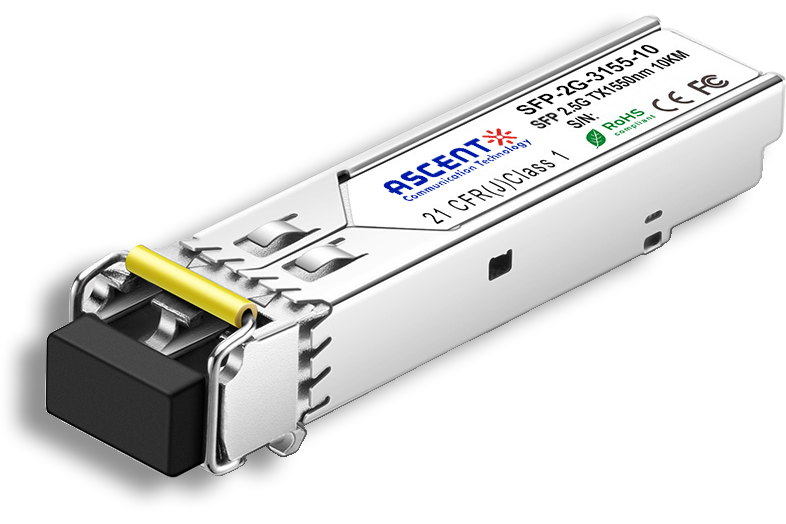
2.5G SFP BiDi 10 km
SFP-2G-LP-3155-10 2.5 Gb/s BiDi Single-mode SFP Transceiver
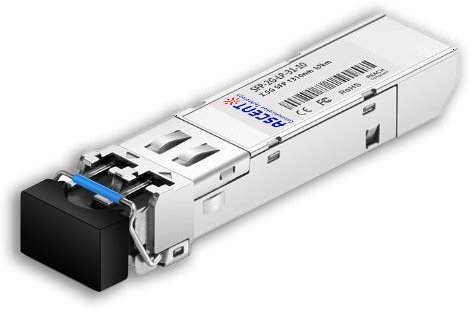
2.5G SFP 1310nm 10km
2.5 Gb/s 1310nm Single-mode SFP Transceiver

2.5G SFP 1310 nm 2 km
SFP-2G-LP-31-2K 2.5 Gb/s 1310 nm Single-mode SFP Transceiver

1.25G SFP EZX 1550 nm 120 km
SFP-AGLP-51-120 1.25Gb/s 1550nm Single-mode SFP Transceiver

1.25G SFP ZX 1550 nm 80 km
SFP-AG-LP-51-80 1.25 Gb/s 1550 nm Single-Mode SFP Transceiver

1.25G SFP EX 1550 nm 40 km
SFP-AG-LP-51-40 1.25 Gbps 1550 nm Single-mode SFP Transceiver
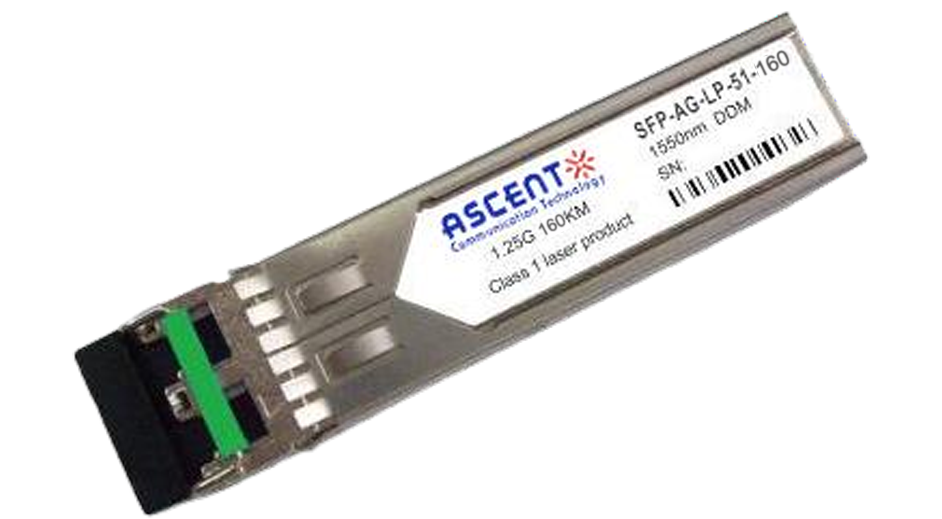
1.25G SFP 1550 nm 160 km
1.25 Gb/s SFP 1550nm 160km Transceiver

1.25G SFP EX 1310 nm 40 km
SFP-AG-LP-31-40 1.25 Gb/s 1310 nm Single-mode SFP Transceiver

1.25G SFP 1310 nm 20 km
SFPP-AG-LP-31-20 1.25 Gb/s 1310 nm Single-Mode SFP Transceiver

1.25G SFP 1310 nm 10 km
SFPP-AG-LP-31-10 1.25 Gb/s 1310 nm Single-Mode SFP Transceiver

1.25G SFP SR 850 nm 550 m
SFP-AG-LP-85-05 1.25Gb/s 850 nm Multi-Mode SFP Transceiver
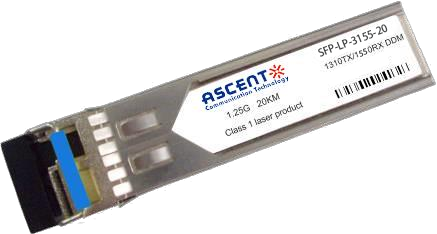
1.25G SFP BX 3155 20 km
SFP BIDI 1.25G 1310/1550 nm 20 km DDM
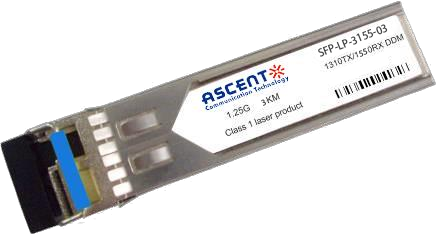
1.25G SFP BX 3155 3 km
SFP BIDI 1.25G 1310/1550 nm 3 km

1.25G SFP BX 4950 120 km
SFP-AGLP4955-120 SFP BIDI 1.25G 1490/1550 nm 120 km DDM

1.25G SFP BX 4950 80 km
SFP-AGLP-4955-80 SFP BIDI 1.25G 1490/1550 nm 80 km DDM
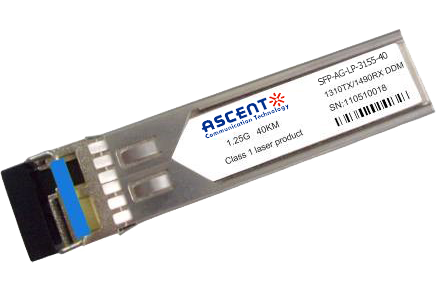
1.25G SFP BX 3150 40 km
SFP-AGLP-3155-40 SFP BIDI 1.25G 1310/1550 nm 40 km DDM
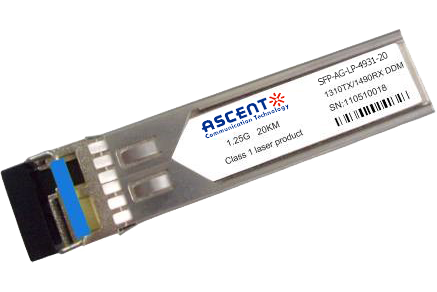
1.25G SFP BX 3149 20 km
SFP-AGLP-3149-20 SFP BIDI 1.25G 1310/1490 nm 20 km DDM

1.25G SFP CWDM 4931 40 km
SFP-AGLP-4931-40 SFP Plug-in, 1.25Gbps, 40km, BIDI, TX=1490nm, RX=1310nm, LC/PC Blue

1.25G SFP CWDM 4931 20 km
SFP-AGSP-4931-20 SFP Plug-in, 1.25Gbps, 20km, BIDI, TX=1490nm, RX=1310nm, SC/PC Blue
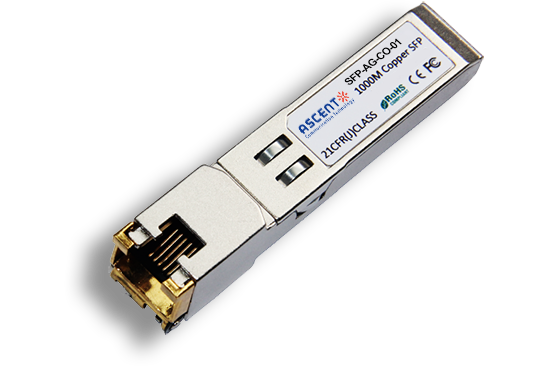
1000M Copper SFP
SFP-AG-CO-01 1000M Copper SFP Transceiver

10/100/1000M Copper SFP
SFP-AG-CO-02 10/100/1000M Copper SFP Transceiver
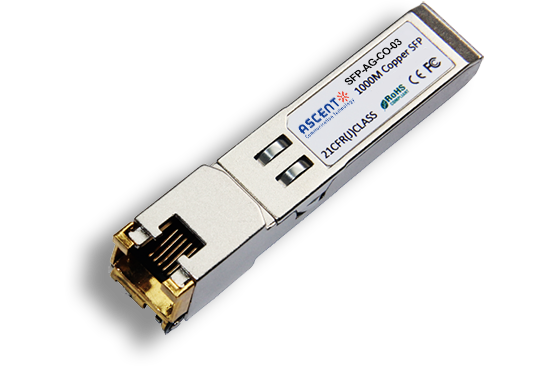
1000M Copper SFP w/ Auto-Negotiation
SFP-AG-CO-03 1000M Auto Adapt Copper SFP Transceiver
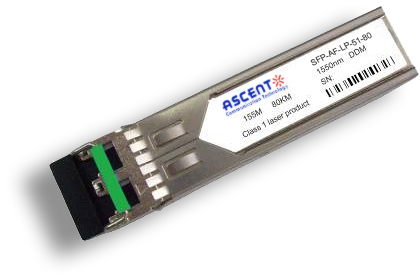
155M SFP 1550 nm 80 km
SFP-AF-LP-51-80 155 Mb/s 1550ô nm Single?Mode SFP Transceiver

100M SFP BX 4931 20 km
SFP-AF-LP-XXXX-20-AN SFP Plug-in, 100Mbps, 20km, BIDI, TX=1490nm, RX=1310nm, LC/PC blue

155M SFP OC3 1310nm 15 km
SFP_ONS-SI-155-I1 SFP Plug-in, OC3 155Mbps 1310nm Single-mode SFP Optical Transceiver, 15km, LC
White Paper
Press Releases
Briefings 1
Briefings 2
Videos, etc.
QRG
Manual1
Manual2
Get in touch with our experts
Feedback